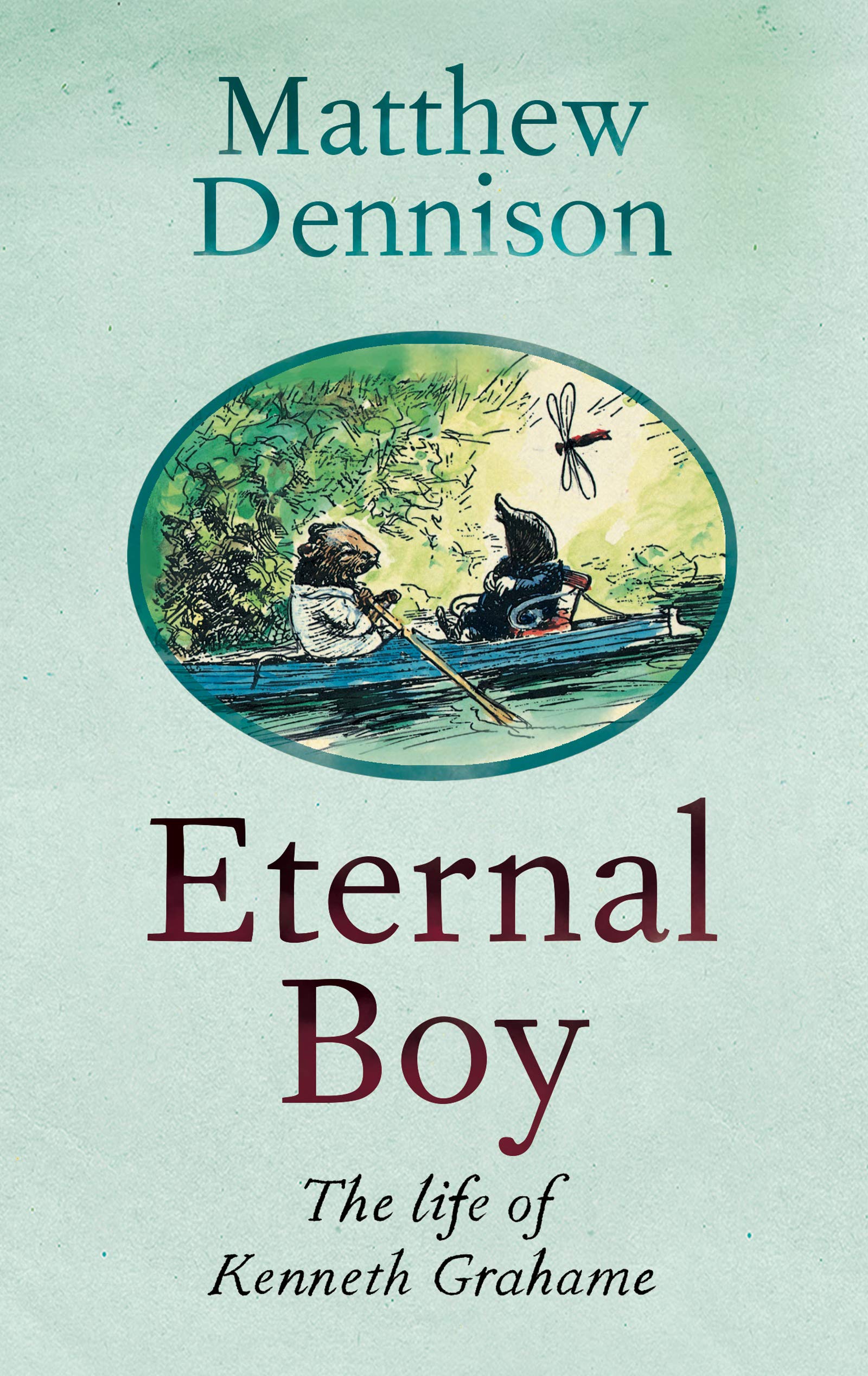In Ian McEwan’s 1987 novel The Child in Time, a high-powered publisher and politician named Charles Darke quits his posts, regresses to a child-like state, and frolics in the woods like a ten-year-old. It often seems as if the British ruling class has nurtured, and still nurtures, more than its fair share of Charles Darkes. We could all name the Peter Pans of politics today. Less transparent, however, are those figures who do not act like spoilt, entitled kids in the public sphere, but remain privately enslaved to the child within. Consider, for instance, the Secretary of the Bank of England at the turn of the 20th century.
Kenneth Grahame never suffered a Darke-level breakdown, though he drifted close to the edge at times. Rather, the stark dissociation between his weekday duties as a sober pillar of the City and the carefree, juvenile idyll where his imagination dwelled gave birth to a peculiar sort of masterpiece: a book still adored by millions who share nothing of his background – or his neuroses. Grahame retired from the Bank of England after he published The Wind in the Willows in 1908. As it happens, the riverine forays and mishaps of Toad, Rat, Mole and Badger did not prove an instant smash – several publishers had turned it down and, famously, the Times Literary Supplement opined that “As a contribution to natural history the work is negligible.” Yet as popular acclamation grew, with the escapee from Threadneedle Street now free to enjoy his pastoral dream sustained by a solid Bank pension and ever-swelling royalties, Grahame’s talent dried. Liberated from the conflicts of his double life, he slipped into comfortable lassitude. No sequels ensued. Toad never honked his horn again and Rat would not return to the riverbank. Grahame’s career, as Matthew Dennison notes, “foundered on inactivity”. Once he could embrace without constraint the inner child who always bewitched him, that alluring phantom slipped away.
Modern biographers have repeatedly explored the strange, sad lives behind our best-loved children's classics. Beatrix Potter, another icon of the junior bookshelf who transformed mourning into magic, was the subject of Dennison’s own previous biography. In this compact and incisive portrait, he shows that Kenneth Grahame took to extremes the archetypal pattern of the wounded spell-binder. Born in 1859 to an Edinburgh family of lawyers, accountants and engineers, Grahame enjoyed a brief spell of infant bliss on the shores of Loch Fyne in Argyll before the hammers of fate struck the family. His devoted mother died when he was five; his father, appointed a judge, succumbed to alcoholism and swiftly abandoned his four children. Unloving relatives and guardians oversaw an upbringing spent on the move from one chilly abode to another. In this “orphaned, exiled childhood”, happiness blossomed only during a fairly brief stay at a house called The Mount by the Thames at Cookham Dean in Berkshire. That paradisal spot “set the perimeters for Kenneth’s dreaming” and, sanctified by memory and imagination, furnished the enchanted landscape of The Wind in the Willows.
“Death, abandonment and upheaval had effectively destroyed his childhood”. Still, in the “imaginary worlds” the lonely orphan invented, joy and safety reigned. Predictably harsh schooling (in Oxford) deepened Grahame’s preference for “emotional and mental absenteeism”. Crucially, though, he never really rebelled. The flight to freedom – embodied by reveries of endless childhood fun in some pristine bucolic playground – took place only in the mind. Outwardly conventional, a hearty “man’s man”, he never lost his “knack of visible conformity”, along with “lip service to majority shibboleths”. Grahame loved messing about in boats – but not rocking them.
This secret agent, silently loyal to the alien powers of fantasy and childhood, flourished. After a spell in the family firm, he joined the Bank of England as a “gentleman clerk” in 1879. He stayed there, promoted right up to the heights of the Secretaryship, for three decades. Encouraged by the gruff, inspirational, one-legged editor WE Henley (the model for Long John Silver), he began in the early 1890s to publish essays in the RL Stevenson mould, lyrical sketches that evoked the “rural nostalgia” that would become a keynote of his style, and also tales of childhood adventures featuring a cast of intrepid and unsupervised youngsters, “the Olympians”. Even Theodore Roosevelt, that ultimate “man’s man”, loved the Olympian yarns when they came out in book form.
 Yet the more dreamy, romantic side of Grahame’s imagination beckoned him away from the sporty masculinity associated with Henley and his chums (the “Henley Regatta”). He edged towards the “Decadent” literary currents of the 1890s, wrote for the notorious Yellow Book and, much to his alarm, found himself within touching distance of the Oscar Wilde circle just as Oscar fell from grace. Sexually speaking, other writers have tried to place the solitary, inhibited Grahame in the late-Victorian closet. Dennison makes no rash claims and notes only that, with women, “his desires were polarised: exoticism or celibacy”. Circus artistes seem to have excited him; upper-middle-class women of the sort that he actually met and knew, less so. Those grief-blasted early years had left him with a longing for deep solitude that he should, Dennison suggests, have had the courage to embrace.
Yet the more dreamy, romantic side of Grahame’s imagination beckoned him away from the sporty masculinity associated with Henley and his chums (the “Henley Regatta”). He edged towards the “Decadent” literary currents of the 1890s, wrote for the notorious Yellow Book and, much to his alarm, found himself within touching distance of the Oscar Wilde circle just as Oscar fell from grace. Sexually speaking, other writers have tried to place the solitary, inhibited Grahame in the late-Victorian closet. Dennison makes no rash claims and notes only that, with women, “his desires were polarised: exoticism or celibacy”. Circus artistes seem to have excited him; upper-middle-class women of the sort that he actually met and knew, less so. Those grief-blasted early years had left him with a longing for deep solitude that he should, Dennison suggests, have had the courage to embrace.
Instead, in 1899 the conventional banker made a conventional marriage, to the well-connected Elspeth Thomson. Predictably, it proved a disaster. The “eternal boy” with bachelor habits recoiled from his wife, who had pursued him during their on-off courtship. “Sex was probably at the bottom of it,” argues Dennison: “a combination of distaste, fear, even astonishment”. Soon they were leading separate lives. Grahame took up his vagabond, blokeish pleasures again. But this ill-matched couple had already produced a son: the hapless Alistair, known as “Mouse”, a sickly, ungainly lad with seriously impaired sight. Mouse's miserable childhood tragically echoed that of his often-absent father. Doomed to disappoint his parents, Mouse struggled and suffered at every institution in which they dumped him. He committed suicide on an Oxford railway track in 1920. Neither Grahame, nor his stricken son, ever glimpsed much of the golden boyhood that his writing so fervently idealises.
Typically, it took the prompting of a pushy American lady – the editor and feminist Constance Smedley – before the stories and letters he composed for Mouse about a cast of riverside creatures saw print as The Wind in the Willows. Sometimes, Grahame appears ashamed of his own, not quite manly, gifts of fantasy and empathy. The rest is not just literary, but popular, history, although it took a while for the lasting affection of readers to drown out high-minded scoffers. Dennison, perhaps impatient by now with his subject’s escapes and evasions, assumes that we know Mole, Toad and co well. Instead of an encomium, he delivers a stern political critique of this “aggressively conservative” book: “Loyalty to caste and suppression of the masses are at the heart of its patrician creed.” Don’t come to Eternal Boy to learn why Grahame’s Thames-side transposition of Homer’s Odyssey, “written in Kenneth's study full of toys”, still charms and delights readers everywhere – even though Grahame would probably assign them to the proletarian stoat-and-weasel hordes of the Wild Wood. Or why his rapturous “pagan” pantheism planted such deep roots in both mainstream and counter-culture in Britain that – thanks to Syd Barrett – Pink Floyd called their first album after the final chapter of The Wind in the Willows: The Piper at the Gates of Dawn.
For a century, Grahame has had acolytes aplenty; Dennison’s cool-eyed scepticism needs to be heard. Eternal Boy is briskly paced and deftly crafted, studded with both finely turned phrases and sharply pointed judgements. As a biography, it elegantly avoids both hagiography and hatchet-job. Meanwhile, delusion-prone “adults in thrall to their childhoods” evidently still run British institutions – though not, thank goodness, the Bank of England itself.
- Eternal Boy: the life of Kenneth Grahame by Matthew Dennison (Head of Zeus, £18.99)















Add comment